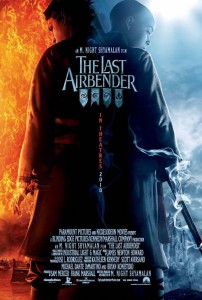film review: the last airbender
The first installment of M. Night Shyamalan’s planned trilogy The Last Airbender, based on the popular Nickelodeon animated TV series, unfortunately does not live up to the original source.
The film follows the story of Aang – a young boy who was frozen for centuries and is revealed to be the successor of the Avatars (and ‘the last airbender’), a group of mystical peacekeepers who can control the elements. He has the ability to ‘bend’ all of the elements (earth, air, fire, water) and his destiny is to stop the fire nation from enslaving the other tribes. Aang reveals that he was initially reluctant to act as the Avatar (since they are not permitted to have families) but he attempts to make up for the past and befriends Katara (a water bender) and her brother Sokka. The film follows their journey as they travel to the other side of the world to learn the secrets of the water-bending craft. During this time Sokka falls in love with Princess Yue of the northern water tribe – but their relationship is short-lived and not well developed on screen. A secondary plot line also ensues between the Fire Lord Ozai and his son Prince Zuko, who attempts to win his father’s approval by kidnapping Aang on various occasions.
Filmed in 3D – as most films seem to be these days – The Last Airbender is visually appealing with sharp images and dark set designs, but the narrative is somewhat lacking (I must admit that I lost attention about half way through the film). While the action sequences utilise fairly impressive special effects, the acting is rather dull and there is little room for character development. With this said, the film is probably aimed at younger audiences who should appreciate the fight scenes and the presence of young actors in strong roles, especially Noah Ringer – the 13 year old actor who portrays the powerful lead character Aang.
Starring Slumdog Millionaire’s Dev Patel and the Twilight Saga’s Jackson Rathbone, The Last Airbender opens in Australian theatres on September 16th.


